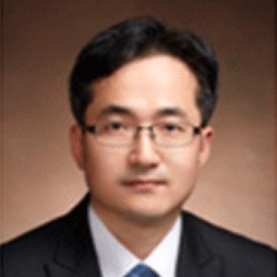Wireless Power for Electric Vehicles
A special issue of Energies (ISSN 1996-1073). This special issue belongs to the section "E: Electric Vehicles".
Deadline for manuscript submissions: closed (31 October 2019) | Viewed by 34142
Special Issue Editor
Special Issue Information
Dear Colleagues,
Wireless power transfer (WPT) technology is one of the most emerging and promising technologies with most highly expected market impacts in automotive industries. The WPT technologies for electric vehicle can provide ultimate convenience, safety, and economic benefit with recent new technologies such as autonomous driving, sensor technologies, and communication technology.
The Guest Editor is inviting submissions for a Special Issue of Energies on the subject area of "Wireless Power for Electric Vehicle." This Special Issue will focus on emerging wireless power transfer technology for electric vehicle. Topics of interest for publication include, but are not limited to:
- Inductive and capacitive wireless power transfer
- Microwave power transmission for electric vehicle
- Wireless power for autonomous driving and intelligent transportation system
- High-efficiency rectifying circuit and amplifier
- Electric motor using wireless power
- Power devices and high power design for wireless power transfer
- Static and dynamic wireless charging for electric vehicles, bikes, and trains
- EMI/EMF issues on wireless power transfer
- Wireless power using renewable energies
- Control and communication for wireless power transfer
Prof. Seungyoung Ahn
Guest Editor
Manuscript Submission Information
Manuscripts should be submitted online at www.mdpi.com by registering and logging in to this website. Once you are registered, click here to go to the submission form. Manuscripts can be submitted until the deadline. All submissions that pass pre-check are peer-reviewed. Accepted papers will be published continuously in the journal (as soon as accepted) and will be listed together on the special issue website. Research articles, review articles as well as short communications are invited. For planned papers, a title and short abstract (about 100 words) can be sent to the Editorial Office for announcement on this website.
Submitted manuscripts should not have been published previously, nor be under consideration for publication elsewhere (except conference proceedings papers). All manuscripts are thoroughly refereed through a single-blind peer-review process. A guide for authors and other relevant information for submission of manuscripts is available on the Instructions for Authors page. Energies is an international peer-reviewed open access semimonthly journal published by MDPI.
Please visit the Instructions for Authors page before submitting a manuscript. The Article Processing Charge (APC) for publication in this open access journal is 2600 CHF (Swiss Francs). Submitted papers should be well formatted and use good English. Authors may use MDPI's English editing service prior to publication or during author revisions.
Keywords
- electric Vehicle
- inductive and capacitive power transfer
- microwave power transmission
- high power design
- electromagnetic issues





